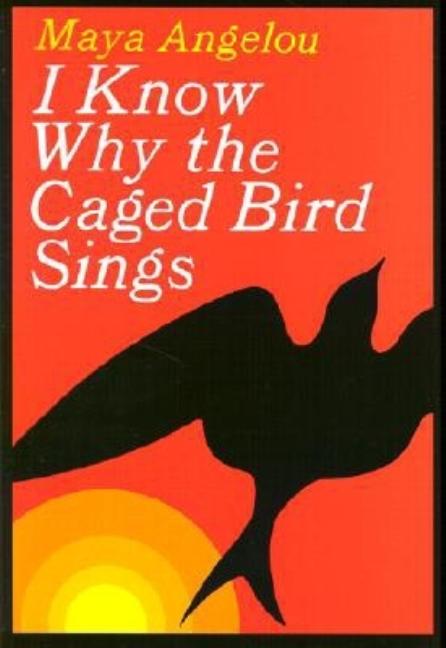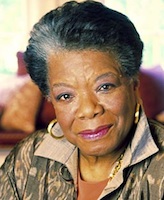Meet-the-Author Recording with Maya Angelou
I Know Why the Caged Bird Sings |
Maya Angelou introduces and shares some of the backstory for creating I Know Why the Caged Bird Sings.
Translate this transcript in the header View this transcript Dark mode on/off
Maya Angelou: I am Maya Angelou. I wrote I Know Why the Caged Bird Sings. I was asked to write this book, and I said, "No." I was a poet, and a playwright, and the editor-in-chief asked me again, "Please write a book about your growing up." I said, "No. I'm a poet, and a playwright."
My closest friend, and brother friend, was James Baldwin, and I am certain that the editor from Random House spoke to James Baldwin and told him that I had said no. James Baldwin told him, "If you want Maya Angelou to do something, tell her you don't think she can do it, and I promise you she will set out to show you she can do it."
So, the editor-in-chief, after about three months, he phoned me and said, "Ms. Angelou, it's probably just as well that you don't attempt to do an autobiography, because autobiography, as literature, is almost impossible to achieve." Whereupon I said, "Okay, I'll try it."
I did decide I would write a book for black girls, because it's so difficult to grow up for everybody, but there are books about growing up for white girls. But there were no books for black girls, so I decided to write this book, and then I realized about a tenth into the book that it was so difficult to write I had to have a bigger audience than just black girls.
So I decided the book was being written for black boys. And then I saw how difficult it was. Really, to write well is very difficult. In fact, Nathaniel Hawthorne, the great novelist, said, "Easy reading is damned hard writing." So to write so that it would be easy reading, I had to really know that I was writing for everybody.
So I was writing for black girls, and black boys, and white girls, and white boys, and Asian girls, Asian boys, Latino girls, Latino boys. And then I decided I would entitle the book I Know Why the Caged Bird Sings. The caged bird sings of freedom, and I understand that.
So I wrote I Know Why the Caged Bird Sings. It begins when I was about seven or eight. I see myself in church.
"What you looking at me for? I didn't come to stay ... " I had not so much forgot, as I couldn't bring myself to remember. Other things were more important. I thought, "What you looking at me for? I didn't come to stay ...
"Whether I could remember the rest of the poem or not was immaterial. The truth of the statement was like a wadded up handkerchief, sopping wet in my fists, and the sooner they accepted it the quicker I would let go of my hands, let them open up, and the air could cool my palms.
I asked, "What you looking at me for?" The children's section of the Colored Methodist Episcopal Church was wiggling and giggling over my well-known forgetfulness. The dress I wore was lavender taffeta, and each time I breathed it rustled, and now that I was sucking in air to breathe out shame it sounded like crepe paper on the back of hearses.
As I watched my grandmother put ruffles on the hem, and cute little tucks around the waist, I knew that once I put it on I would look like a movie star. I was going to look like one of the sweet little white girls that everybody loved. And in fact, hanging softly over the black Singer sewing machine, it looked like magic, and when people saw me wearing it, everybody was going to run up to me and say, "Oh, Marguerite ... " sometimes it was, "Oh, dear Marguerite, forgive us, please, we didn't know who you were, how beautiful you were."
And I would answer generously, "No, no you couldn't have known. Of course I forgive you."
Just thinking about it made me go around with angels' dust sprinkled on my face for days.
This Meet-the-Author Recording with Maya Angelou was exclusively created in July 2009 by TeachingBooks with thanks to Random House.



